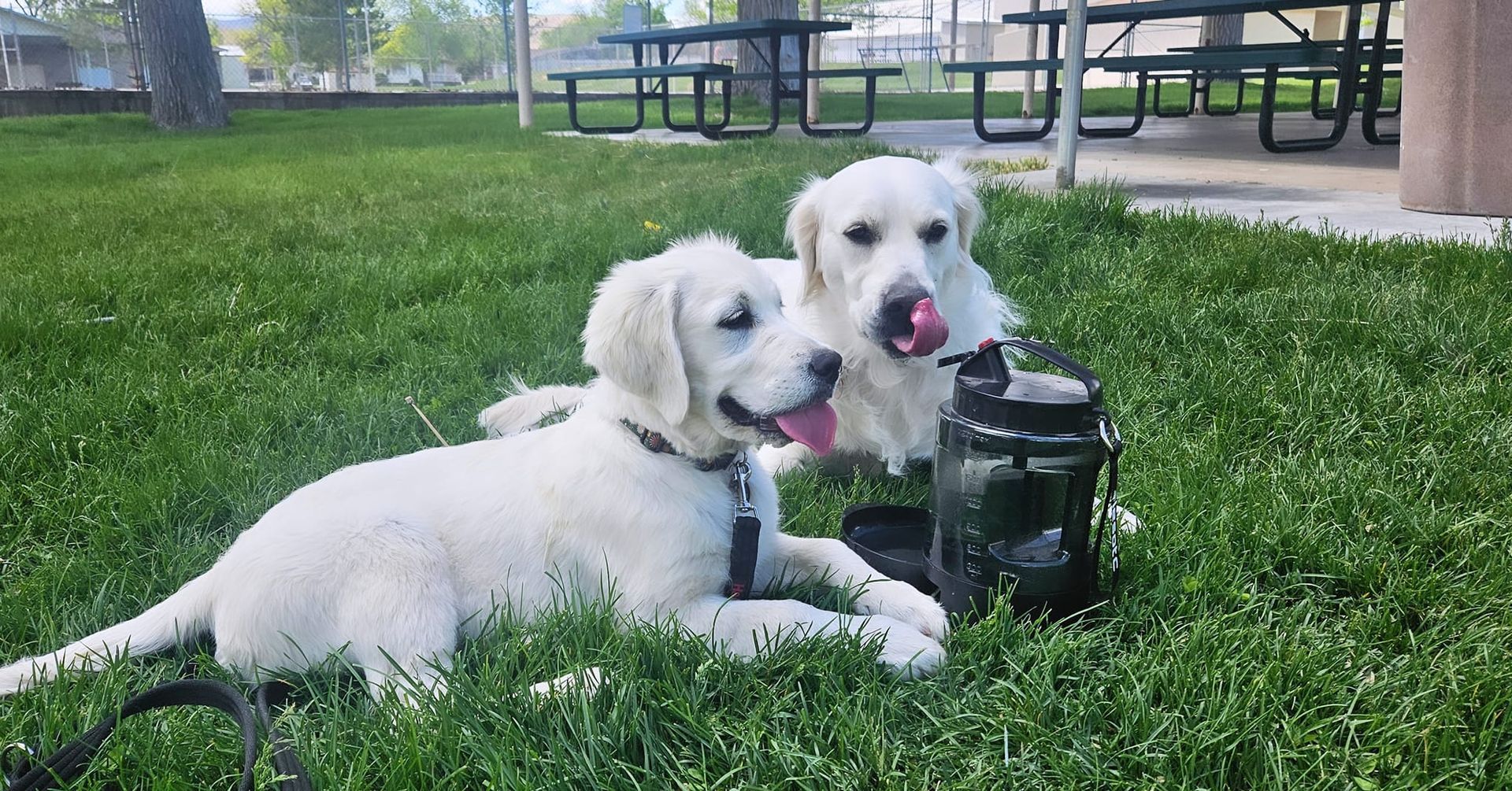Golden Retrievers
Everything You Need to Know About Golden Retrievers
Golden Retrievers are one of the most beloved dog breeds worldwide. Known for their friendly temperament, intelligence, and beautiful golden coats, they make excellent family pets, service dogs, and companions. In this blog post, we will cover everything about Golden Retrievers, from their history to care requirements, training, and more.
History and Origin
Golden Retrievers originated in Scotland in the 19th century, developed by Lord Tweedmouth to be excellent hunting and retrieving dogs. By crossing various breeds, including the Yellow Retriever, Bloodhound, and Tweed Water Spaniel, he created the Golden Retriever, known for its keen hunting instincts and gentle temperament. The breed gained popularity in the 20th century and became a favorite among dog lovers worldwide.
Physical Characteristics
Golden Retrievers come in a variety of shades, ranging from dark red to light cream. This variation in coat color is due to genetic differences passed down through generations. While all Golden Retrievers share the same breed standards, the specific shade of their coat can depend on their lineage. Darker shades are often associated with field-bred Golden Retrievers, which are bred for hunting and working purposes, and are more common in American lines. Lighter cream-colored Goldens are often seen in European lines, particularly for show purposes. Regardless of color, all Golden Retrievers have the same loving temperament and energetic personality.
Golden Retrievers are medium to large-sized dogs with a well-proportioned build. They have a distinctive dense, water-repellent golden coat that ranges in shades from light cream to deep gold. Their expressive brown eyes and floppy ears give them an endearing and friendly appearance.
- Size: Males weigh between 65-75 pounds, while females weigh between 55-65 pounds.
- Height: Males stand between 23-24 inches tall, and females between 21.5-22.5 inches.
- Lifespan: On average, Golden Retrievers live between 10-12 years.
Temperament and Personality
Golden Retrievers are known for their gentle, affectionate, and friendly personalities. They are highly social dogs that thrive on companionship, making them excellent family pets. They are also intelligent, eager to please, and easy to train, making them ideal candidates for service and therapy work. However, they require ample socialization and mental stimulation to prevent boredom.
Golden Retrievers, to me, are my best friends. They have a personality that is so caring that they know when they are needed. They have turned my sad days into happy ones. They want to be around you and stay by your side as a constant companion. They have helped me calm my anxiety, encouraged me to exercise because they need to get out too, and they bring joy just by being in our presence. They are so smart and eager to please, which makes learning commands fast and fun. They are loyal and will always be a lifelong companion.
Training and Intelligence
Golden Retrievers are highly trainable due to their intelligence and willingness to learn. They excel in obedience training, agility, and even advanced tricks. Early socialization and consistent positive reinforcement training help shape well-mannered and obedient dogs.
Exercise and Activity Needs
Golden Retrievers are active dogs that require regular exercise to stay happy and healthy. Activities such as walking, running, playing fetch, and swimming are excellent ways to keep them engaged. They thrive in environments where they can participate in outdoor activities with their families.
Grooming and Care
Golden Retrievers have thick, double-layered coats that require regular grooming to maintain their health and appearance. Brushing their coat weekly helps reduce shedding and prevents matting. Other grooming needs include:
- Regular ear cleaning to prevent infections.
- Trimming nails to avoid overgrowth and discomfort.
- Dental care to prevent gum disease and bad breath.
Health and Common Concerns
Like all breeds, Golden Retrievers are prone to specific health issues. Common concerns include:
- Hip and elbow dysplasia: Genetic conditions affecting joint development.
- Heart diseases: Such as subaortic stenosis (SAS).
- Cancer: Golden Retrievers have a higher predisposition to cancer compared to other breeds.
- Eye diseases: Such as Progressive Retinal Atrophy (PRA), cataracts, and glaucoma, which can affect vision over time.
Responsible breeders take important steps to reduce the risks of these health issues. They conduct health screenings and genetic testing before breeding to ensure puppies have the best chance at a healthy life. The Golden Virtues, takes all these testing’s very seriously. Ethical breeders also prioritize responsible pairings to avoid passing down hereditary conditions and provide thorough veterinary care for both parents and puppies. When looking for a Golden Retriever, choosing a breeder who follows these practices can help ensure a healthier and happier pet.
Diet and Nutrition
A well-balanced diet is crucial for maintaining the overall health of a Golden Retriever. High-quality dog food rich in protein, healthy fats, and essential nutrients supports their active lifestyle. Portion control and monitoring their weight help prevent obesity.
Golden Retrievers as Family Pets
Golden Retrievers are excellent family dogs, known for their patience and affectionate nature. They get along well with children and other pets, making them ideal for multi-pet households. Their loving and playful demeanor ensures they bring joy and companionship to their owners.
Conclusion
Golden Retrievers are loyal, intelligent, and affectionate dogs that make wonderful companions. Whether you're looking for a family pet, a therapy dog, or an adventure partner, a Golden Retriever will fit the role perfectly. Proper care, training, and love ensure a fulfilling life with this incredible breed.


©2024 All Rights Reserved | The Golden Virtues | Designed by Consumr Buzz





